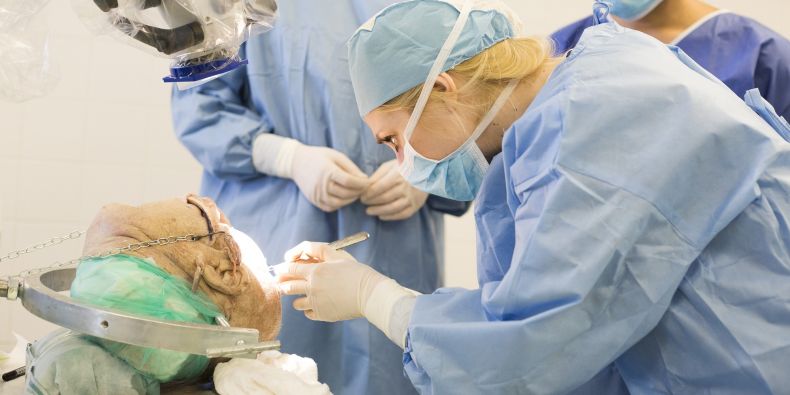As for many professions, education is a never-ending process also for surgeons. In recent years, they have had the opportunity to learn new procedures or try different approaches to specific surgical interventions at the Department of Anatomy of the MU Faculty of Medicine, which has been organizing “preparation courses”. At the beginning of April, the department welcomed international experts in neurosurgery at a course organized under the patronage of the World Federation of Neurosurgical Societies.
“Our lecturers and, to a limited extent, students of the Faculty of Medicine can also take part in the preparation courses as onlookers,” says Petr Dubový, the head of the Department of Anatomy. “This gives the anatomists from our faculty a chance to stay in touch with clinical experts and our students can see the importance of anatomical knowledge in practice.”
The courses provide further education to young physicians and are also offered to students, who can see surgical interventions in real life and not just through the study of anatomy.
“During classes, we try to teach them the complete anatomy of the human body, but that requires a great deal of simplification,” explains Marek Joukal, one of the organizers. “If they go into clinical practice, they discover that experts in their field have much deeper and more detailed knowledge of the anatomy of ‘their’ body parts.”
At the most recent session organized at the department by the Educational Centre for Practical Anatomy, participants could also learn about actual operations in the cranial cavity and try out surgical procedures on anatomical preparations.
As Joukal explains, “Theory and practice cannot really be separated from each other and the courses therefore generally start with a short theoretical introduction, which is immediately put into practice on actual bodies. Participants can take advantage of a fully equipped operating room just like in a hospital and they can try different methods or materials before using them on their patients.”

The course included a presentation of several case studies of meningiomas, or tumours arising out of the pachymeninx in the area of the lesser wings of the sphenoid bone. “Operations on these tumours are highly complicated and often require special access through the orbit. The participants were able to try this approach under the supervision of experienced lecturers and on preparations with colour-coded arteries and veins,” says Joukal.
Both Czech and international lecturers shared their experience with about twenty-five participants. According to Joukal, the courses are very much in demand. The Department of Anatomy has been organizing them since 2006. Every year, there are four or five courses, each on a different topic.
“The participants are very happy about the quality of the anatomical preparations they work with as well as the facilities of the department, which is one of the most cutting-edge in the Czech Republic and the whole of Europe,” notes Joukal. “Moreover, similar courses are only run at several places in Europe. The closest such courses are in Graz and Innsbruck in Austria.”
